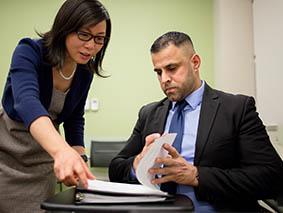Hybrid Meeting Best Practices
- Continue to schedule Teams meeting sessions for ALL meetings. Even if all attendees are expected to be in the meeting space, scheduling a Teams meeting ensures anyone who can’t be there in person can still attend.
- Identify at least one person in the meeting to assist with virtual attendees by:
- having their computer open;
- watching for chat messages, raised hands, and shared mics from virtual attendees; and
- sharing audio to the room when a virtual attendee wants to speak.
- Encourage participants to be familiar with virtual meeting etiquette guidelines.
- Test any technology you intend to use during the meeting beforehand, and start the meeting early to allow virtual attendees time to join and test their own technology.
- If you intend to use or share any documents during the meeting, share them in advance as part of the event so virtual attendees can access that information and follow along.
- Encourage any meeting participants who intend to present via screen sharing to share their content in advance. Virtual attendees with weak or unstable connections may have a more difficult time sharing their screens, especially in larger meetings.
- If you share videos during a meeting, share links to that content via YuJa or YouTube so attendees can view that content separately from the meeting recording.
- Virtual attendees may not be able to view video content or shared screens during the meeting. If your meeting will have a lot of visual content from a camera, consider recording the meeting to make that content available.
- Use best judgement when deciding whether or not to record meetings. You may only wish to record certain portions of meetings; long recordings may be difficult for attendees to revisit without guidance.
- Be flexible and resourceful if something doesn’t go as planned; mistakes and technical errors happen, but they don’t have to prevent you from having a successful meeting.

